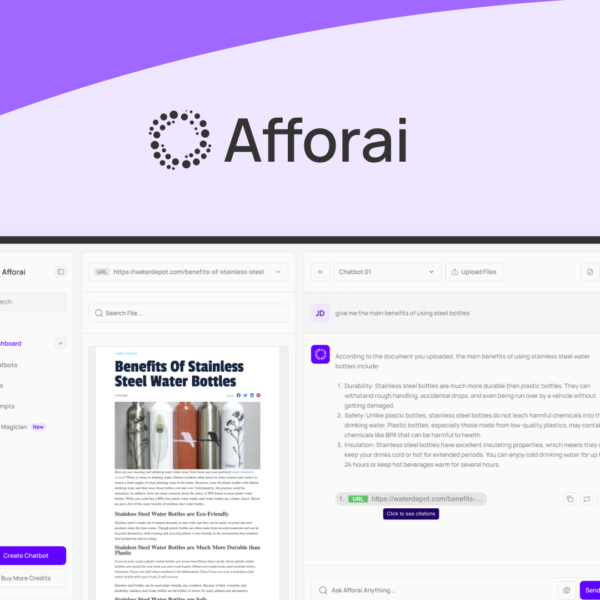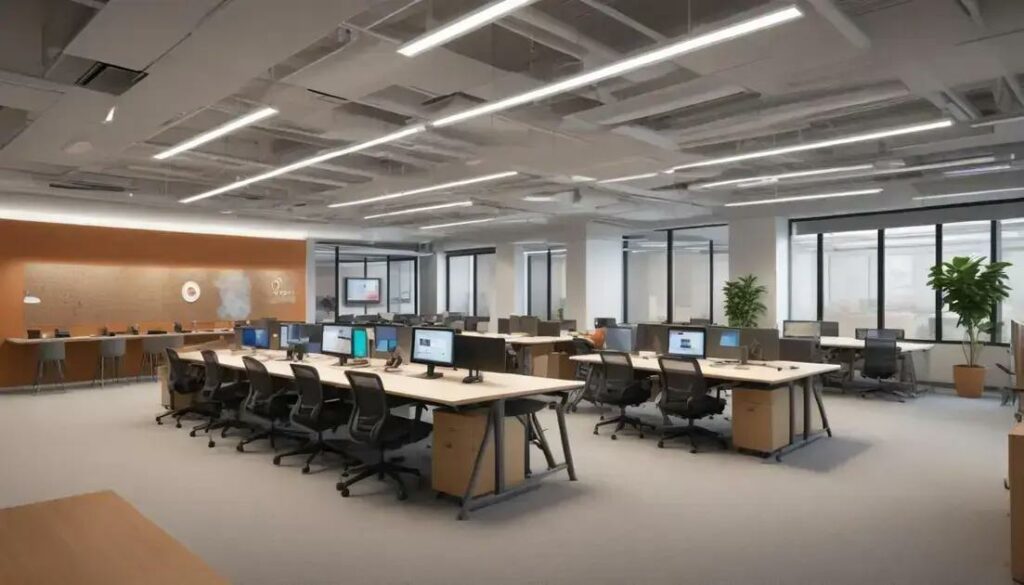In today’s fast-paced landscape, flexible workspaces are not just a trend; they’re essential for SaaS companies aiming for growth. Are you ready to boost your team’s productivity?
The Strategic Advantage of Flexible Office Spaces for SaaS Companies
Flexible office spaces offer a strategic edge for SaaS companies. They adapt to changing needs. This means more room for growth and less wasted space. Companies can scale up or down easily depending on their stage of development.
Benefits of Flexible Workspaces
Flexible workspaces boost productivity by fostering collaboration. Creating spaces for teams to brainstorm can lead to innovative ideas. Additionally, these environments often come with amenities that enhance employee satisfaction, such as coffee bars and relaxation areas.
Catering to Team Dynamics
With varied work areas, teams can focus or collaborate as needed. Open spaces encourage conversations. In contrast, quiet zones help in concentrating on individual tasks. This balance is crucial for both creativity and productivity.
Cost Efficiency
One major benefit is cost-saving. Traditional leases can be expensive and inflexible. Flexible workspaces typically offer short-term leases, reducing financial risk. Companies pay only for what they need.
Access to Talent
Flexible office spaces can also help attract talent. Many employees prefer remote or hybrid work options. By offering a flexible workspace, companies can tap into a broader talent pool, ensuring they find the best people for their teams.
Overall, the strategic use of flexible office spaces helps SaaS companies thrive. They can respond quickly to market changes and foster a culture of collaboration and innovation.
Cost Optimization Through Scalable Workspace Models
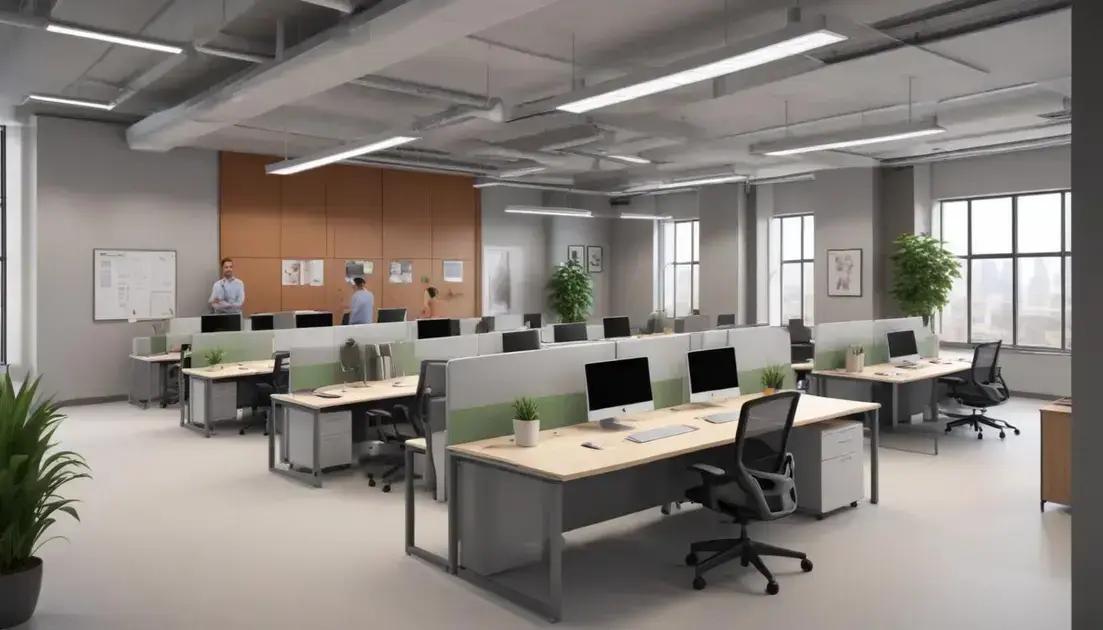
Cost optimization is key for SaaS companies, and scalable workspace models help achieve this. These models allow businesses to adjust space based on needs. When a company grows, it can easily expand its workspace. If it shrinks, it can downsize without a hassle.
Flexible Lease Terms
One major benefit of scalable models is flexible lease terms. Short leases reduce financial risk. Companies pay only for the space they use, preventing unnecessary costs.
Shared Resources
Many scalable workspaces offer shared resources. This includes conference rooms, equipment, and reception services. Sharing these resources cuts costs and enhances collaboration among teams.
Efficient Space Utilization
These workspace models promote efficient space utilization. Businesses can choose layouts that fit their current projects. For example, they can have open spaces for teamwork or quiet areas for focused work.
Also, employees enjoy the benefits of a dynamic environment. When offices are designed to adapt, they can attract and retain talent. People love working where they feel comfortable and inspired.
Cost optimization through scalable workspace models is a smart choice for SaaS companies. It helps them stay agile and competitive in a fast-moving market.
Aligning Workspace Strategy With SaaS Growth Cycles
Aligning workspace strategy with SaaS growth cycles is crucial for success. SaaS companies often experience rapid changes in demand. It’s essential to adjust workspaces to support these changes.
Understanding Growth Cycles
SaaS growth cycles can be unpredictable. Some months may see a large increase in users, while others may slow down. Understanding these cycles helps companies to plan their workspace needs.
Flexible Workspace Options
Flexible workspace options allow businesses to adapt quickly. Instead of long leases, they can choose short-term agreements. This flexibility provides room to grow or shrink as needed.
Creating Collaborative Environments
As teams grow, collaboration becomes more important. Office layouts should encourage teamwork. Open areas and meeting rooms spark communication and creativity among team members.
It’s also important to provide quiet zones for focused work. A balance helps teams stay productive during different project phases.
Monitoring Space Utilization
Regularly reviewing how much space is used is key. Empty desks signal that adjustments are needed. Using tools to track space can help businesses make data-driven decisions.
Aligning workspace strategy with growth cycles not only supports staff but also saves costs. Efficient use of space contributes to a positive company culture and smoother operations.
Geographic Flexibility and Talent Acquisition

Geographic flexibility plays a big role in talent acquisition for SaaS companies. With remote work becoming more common, companies can hire from anywhere. This opens up a larger pool of talent.
Access to Diverse Skills
When companies hire remotely, they gain access to unique skills. Individuals from different regions bring varied perspectives and experiences. This diversity can lead to innovative solutions and improved problem-solving.
Attracting Top Talent
Many top talents prefer companies that offer remote work options. They want the freedom to work from home or anywhere they choose. By providing this flexibility, companies can attract the best professionals in their field.
Building a Stronger Team
Geographic flexibility allows teams to form across borders. Employees can collaborate with colleagues from different backgrounds. This enriches the company culture and fosters a sense of community.
Using technology like video calls and project management tools, teams stay connected. These tools help maintain communication, ensuring everyone is on the same page.
Reducing Overhead Costs
Hiring talent from various locations can also reduce overhead costs. Companies can save on office space and utilities. These savings can be redirected toward other important business areas.
Overall, geographic flexibility not only aids talent acquisition but also strengthens the entire team. Companies that adopt this model are likely to thrive in a competitive market.
Innovative Collaborative Workspace Models Driving SaaS Innovation
Innovative collaborative workspace models are essential for driving SaaS innovation. These models encourage teamwork among employees and contribute to creative thinking. By designing spaces that promote collaboration, companies can unlock new ideas and solutions.
Flexible Layouts
Many modern workspaces feature flexible layouts. This allows teams to create their ideal working environment. Whether it’s a quiet zone for focused work or an open space for discussions, flexibility helps meet various needs.
Technology Integration
Innovation thrives on technology. Collaborative spaces often come with the latest tech tools. High-speed internet, video conferencing, and interactive whiteboards enhance communication and collaboration. These tools make it easy for teams to share ideas and projects.
Creating Community
These workspace models focus on building a sense of community. Social areas for casual interactions promote relationships among team members. When people feel connected, they work better together.
Regular team-building activities and informal gatherings can also strengthen bonds. A positive workplace culture can lead to greater job satisfaction and retention.
Encouraging Diversity
Diverse teams bring unique perspectives. Innovative collaborative workspaces encourage input from everyone, regardless of their role. This diversity sparks creativity and drives better results.
Overall, innovative collaborative workspace models boost SaaS companies. They foster a culture of collaboration, leading to groundbreaking ideas and solutions.
Designing Spaces for Product Development Acceleration
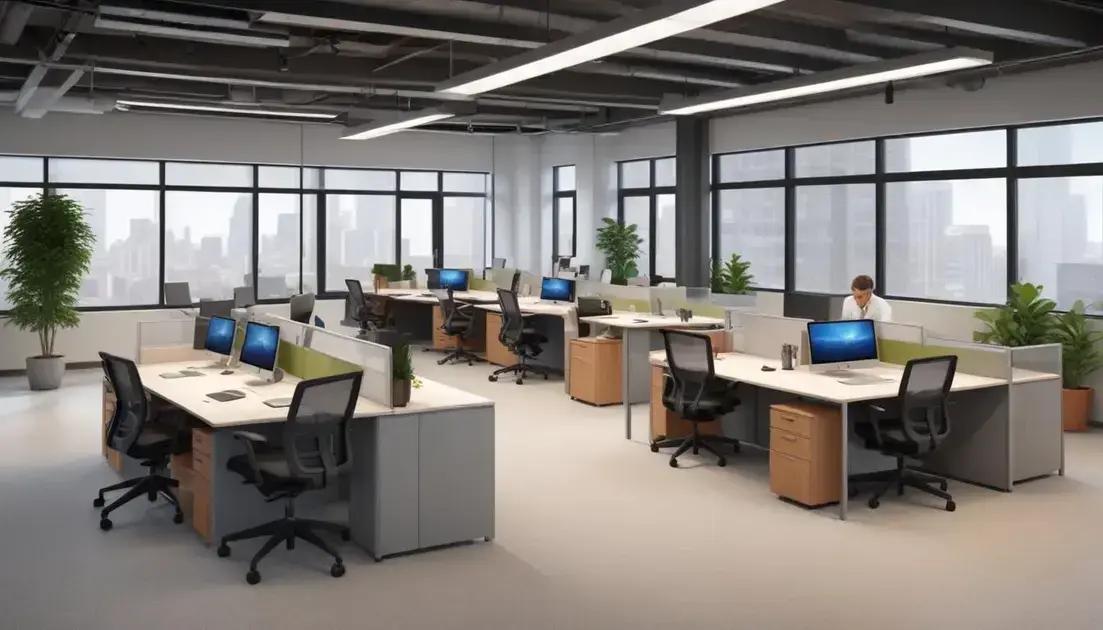
Designing spaces for product development acceleration is crucial for SaaS companies. Well-thought-out environments can boost creativity and speed up the development process. By creating spaces that inspire, teams can work more effectively together.
Open Collaboration Areas
Open collaboration areas promote teamwork. These spaces allow team members to brainstorm freely. When people can share ideas easily, innovation often follows. Flexible seating arrangements can make collaboration even easier.
Dedicated Focus Zones
While collaboration is essential, dedicated focus zones are equally important. These quiet areas help developers concentrate on their tasks. A peaceful environment allows for deeper thinking and problem-solving.
Prototyping Spaces
Prototyping spaces equipped with the right tools can fast-track product development. Having access to necessary resources, like 3D printers or brainstorming boards, lets teams quickly bring ideas to life. This swift execution can lead to faster iterations and improvements.
Comfortable Break Areas
Comfortable break areas support mental well-being. Short breaks can refresh minds and boost productivity. Having spaces where employees can relax and recharge helps keep creativity flowing.
Designing spaces with these elements enhances product development. By fostering collaboration, focus, and well-being, teams can accelerate their projects and achieve better results.
Building Community and Culture in Shared Office Spaces
Building community and culture in shared office spaces is essential for success. These environments bring together different teams and companies. This mix encourages networking and can lead to new opportunities.
Creating a Welcoming Atmosphere
A welcoming atmosphere sets the tone for a shared space. Bright colors, comfortable seating, and plants can make a big difference. When people feel comfortable, they’re more likely to engage with others.
Organizing Social Events
Social events foster connections among employees. Organizing regular meetups, happy hours, or workshops can provide great networking opportunities. These gatherings help people break the ice and form friendships.
Encouraging Collaboration
Collaboration spaces play a vital role in shared offices. Providing areas where teams can brainstorm ideas encourages creativity. When people work together, they can share diverse perspectives and skills.
Support for Well-being
Supporting employee well-being is crucial in building culture. Shared office spaces can offer wellness programs, fitness classes, or quiet rooms. These initiatives help everyone feel valued and cared for.
Ultimately, a strong community culture in shared office spaces leads to a more productive environment. People who feel connected and supported are likely to contribute more to their teams.
Cross-Pollination Opportunities in Coworking Environments

Cross-pollination opportunities in coworking environments can spark creativity and innovation. Diverse professionals share ideas and insights in these spaces. This interaction often leads to exciting collaborations.
Mixing Different Skills
Coworking spaces bring together people from various industries. Designers, marketers, and developers all work in close proximity. This mix promotes a rich exchange of skills and perspectives.
Informal Networking
Informal networking happens naturally in coworking environments. Coffee breaks and shared spaces make it easy to strike up conversations. These casual interactions can result in new partnerships and projects.
Workshops and Events
Many coworking spaces host workshops and events. These gatherings allow members to learn from one another. Sharing knowledge strengthens connections and builds a sense of community.
Access to Diverse Resources
Cross-pollination also involves sharing resources. Access to different tools and technologies enhances productivity. Members can leverage each other’s expertise, making work easier and more efficient.
Ultimately, coworking spaces create a fertile ground for innovation and creativity. By working alongside diverse individuals, professionals can inspire each other and generate new ideas.
The Tech-Forward Advantage: Commercial Office Space Solutions for SaaS
The tech-forward advantage in commercial office space solutions is vital for SaaS companies. These spaces are designed to meet the demands of fast-paced tech environments. They provide the features and flexibility that modern businesses need.
High-Speed Internet and Connectivity
First and foremost, high-speed internet is a must. SaaS companies rely on cloud-based solutions that need reliable connectivity. Office spaces that provide strong, stable internet connections keep teams productive.
Smart Office Technology
Smart office technology enhances the workplace experience. Features like smart lighting, automated temperature control, and advanced meeting room tech help streamline operations. These tools make daily tasks easier and improve overall efficiency.
Flexible Layouts for Collaboration
Flexible layouts that encourage collaboration are essential. Open spaces, breakout rooms, and private booths allow teams to work in ways that suit them best. This adaptability fosters creativity and teamwork.
Accessibility and Location
Additional factors include accessibility and location. Commercial office spaces in prime areas attract top talent. These locations should be easy to reach by public transport or car, making commuting simpler for employees.
In summary, choosing the right commercial office space is crucial for SaaS companies. Tech-forward solutions boost productivity, support collaboration, and help attract the best talent.
Technology Infrastructure Requirements for SaaS Teams
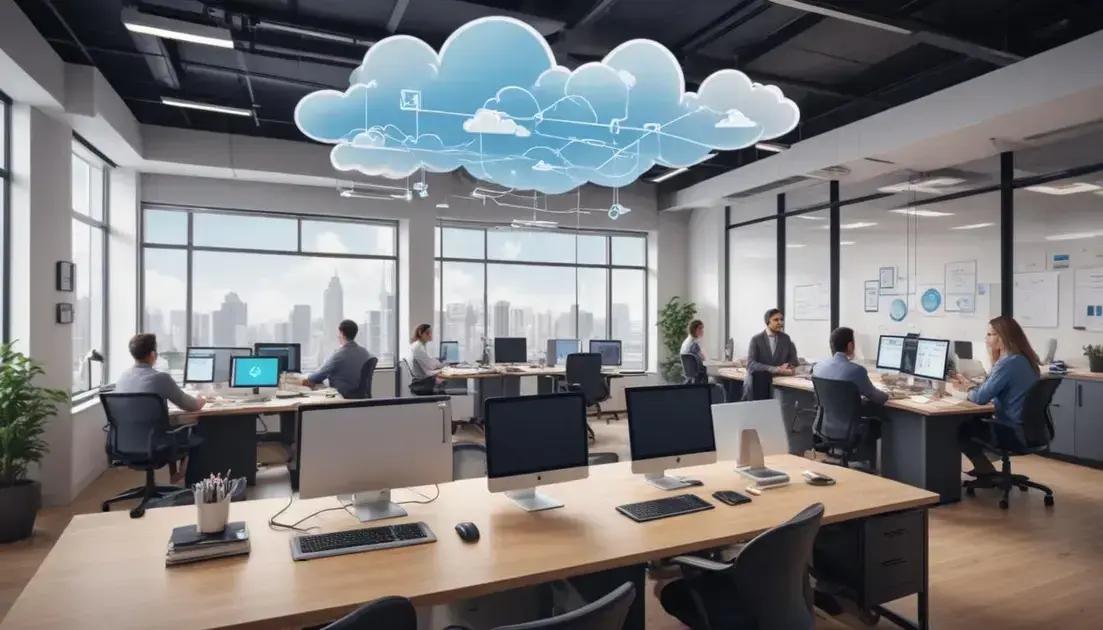
Technology infrastructure requirements are crucial for SaaS teams. A strong infrastructure supports seamless operations and enables innovation. Teams need the right tools to work effectively in a fast-paced environment.
Reliable Internet Connectivity
First, reliable internet connectivity is essential. High-speed internet ensures that SaaS applications run smoothly. Any downtime can disrupt work and affect productivity.
Cloud-Based Services
Cloud-based services are another key requirement. They allow teams to access data anytime and from anywhere. Using cloud storage means files are safe and easily shareable among team members.
Collaboration Tools
Collaboration tools foster teamwork. Applications like Slack, Zoom, and project management software help teams communicate effectively. These tools support remote work and improve overall cooperation.
Secure Data Handling
Security is a top priority for SaaS teams. Implementing proper security protocols and tools protects sensitive data. Regular training on data security practices helps keep information safe.
Additionally, conducting system updates and keeping software up to date is crucial. This ensures that teams have the best tools available and that systems run without interruptions.
Data Security Considerations in Shared Environments
Data security is crucial in shared environments like coworking spaces. These spaces host many people, making data breaches possible. Companies must take steps to safeguard their information.
Understanding Risks
First, understanding the risks is important. Shared networks can be vulnerable to cyber attacks. Sensitive information may be at risk if proper measures aren’t taken.
Using Secure Connections
Always use secure connections while working in shared spaces. Virtual Private Networks (VPNs) encrypt data, keeping it safe from prying eyes. This simple step can protect your online activity.
Regular Software Updates
Keeping software up to date is another key practice. Regular updates patch vulnerabilities and improve security. This is essential for any devices used in shared environments.
Access Controls
Implementing strong access controls helps limit who can view sensitive information. Use passwords and two-factor authentication to protect your accounts. This adds an extra layer of security.
Data Backup
Finally, regular data backups are vital. In case of a breach or data loss, backups can help restore information. Cloud storage solutions often provide automated backup options.
By following these data security considerations, companies can operate safely in shared environments. Protecting sensitive information should always be a top priority.
Smart Office Features Enhancing SaaS Team Performance
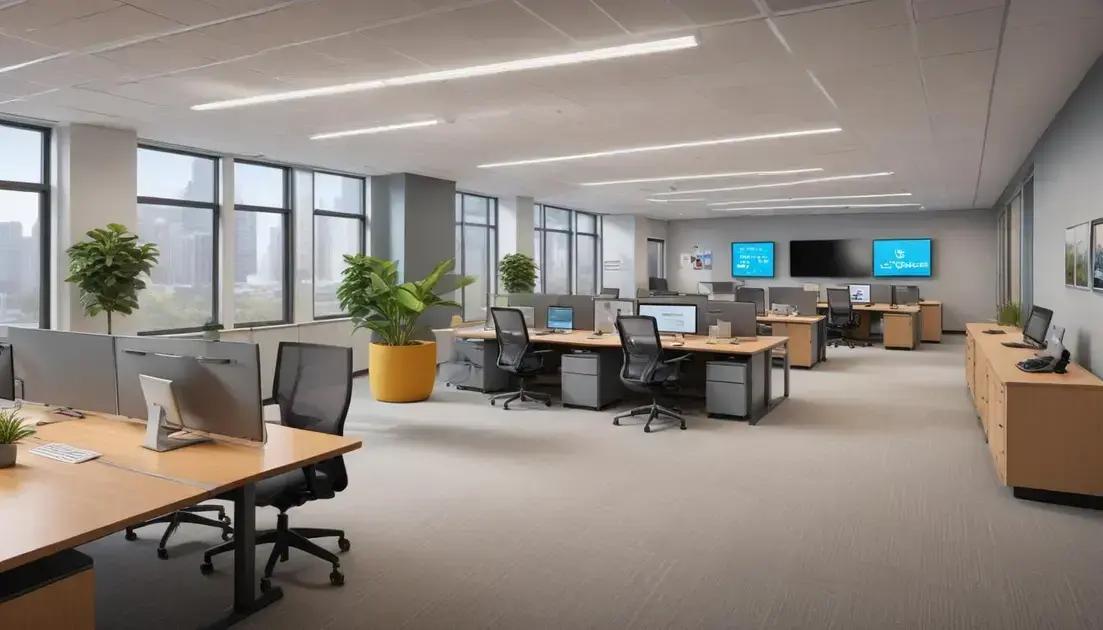
Smart office features greatly enhance SaaS team performance. These features create a productive and comfortable work environment. By incorporating technology, companies can boost efficiency and employee satisfaction.
Automated Systems
Automated systems help manage office resources. Smart lighting and heating adjust based on occupancy. This not only saves energy but also creates a comfortable atmosphere for work.
Integrated Communication Tools
Integrated communication tools streamline teamwork. Tools like Slack or Microsoft Teams keep everyone connected. Teams can share updates and collaborate easily, no matter where they are.
Data-Driven Insights
Smart offices often use data-driven insights to improve workflows. Sensors track how spaces are used. Analyzing this data helps companies make informed decisions about layout and design.
Flexible Workspaces
Flexible workspaces allow teams to adapt their environment. Employees can choose between quiet zones and collaborative spaces. This adaptability fosters creativity and meets different work styles.
Health and Wellness Features
Smart offices can also include health and wellness features. Proper air quality systems and ergonomic furniture help keep employees comfortable. Healthy employees are generally more productive and engaged.
Overall, smart office features create an efficient workplace that supports SaaS team performance. By embracing these technologies, companies can thrive in a competitive market.

